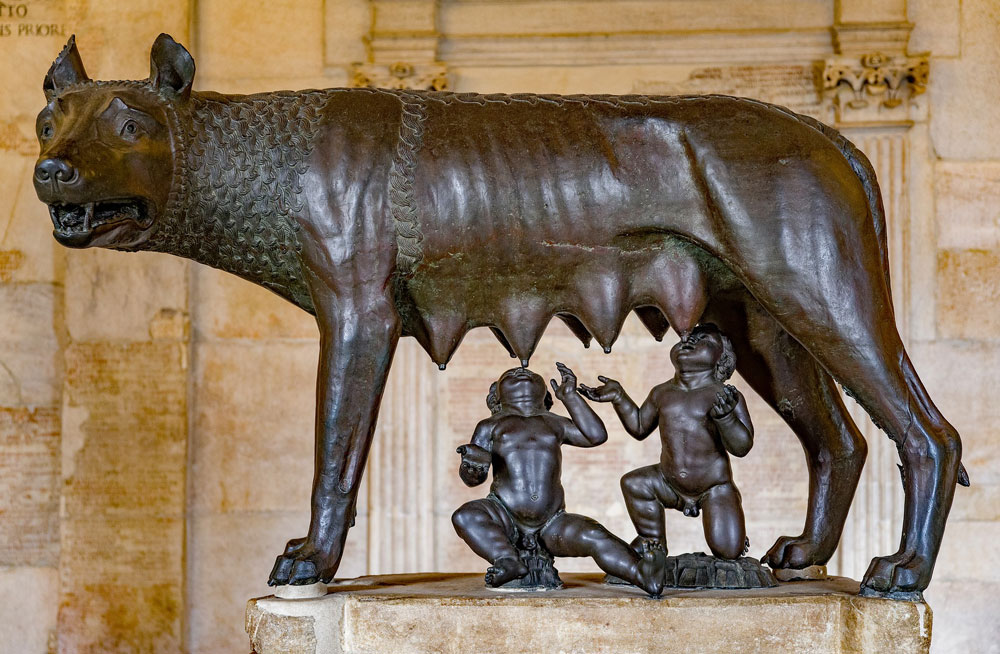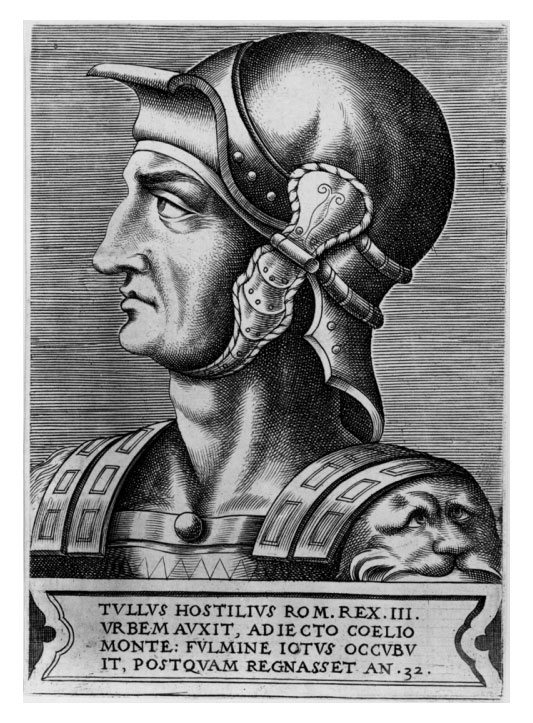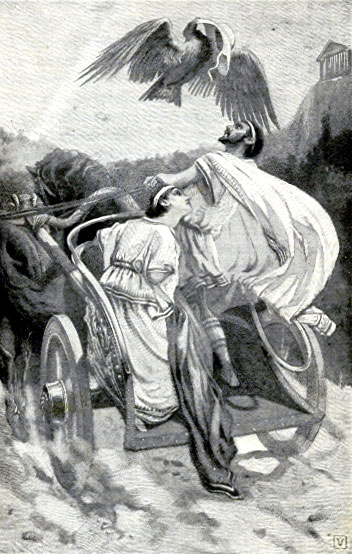Period: 753 – 510 BC
Historical details are still too obscure for any definite records of Rome under the Roman kings, All remains half mythical.
But it was under the Roman Kings that the Roman ability to create an empire of sorts first came to the fore, even though any original intentions would hardly have been of an imperial nature.
In all, there were said to have been seven kings of Rome covering a period of over two hundred years.
Roman Kings – Romulus
The first recognized among the Roman Kings was its mythical founder, Romulus.
To him is attributed the foundation of the senate.
He is also said to have ruthlessly pursued a policy of expanding the population, granting refuge and acceptance to criminals on the run at the asylum on the Capitoline Hill. He expanded the city’s boundaries to encompass four hills; Capitoline, Aventine, Caelian, and Quirinal.
If Romulus’ reign was infamous, this impression is only further reinforced with an episode widely known as the ‘Rape of the Sabine women’.
With Rome’s populace enlarged with runaway slaves and criminals, King Romulus found himself ruling a nation with too few women. The story goes that he staged extravagant celebrations for the festival of Consus (the god of the granary and the storehouse), inviting the neighboring tribes to attend.
Many of the neighboring Sabines were invited. But in mid-celebration the festival was brought to a sudden end, when Romulus and his Romans revealed their true intentions, taking possession of the unmarried Sabine women by force and claiming them as brides. Romulus himself came by his wife Hersilia by this very method.
The Sabine town of Cures, ruled by King Titus Tatius, quite understandably declared war.
In the resulting fight, the Sabines managed to capture the Capitoline Hill, due to the treachery of Tarpeia who opened a gate (and who gave name to the Tarpeian Rock on the Capitoline). Further legend has it that it was the Sabine women who intervened to stop the fighting between their Sabine relatives and their newfound Roman husbands.
A peace was agreed and the Sabines of Cures and the Romans united and henceforth became one people. The two kings thereafter ruled jointly, Titus Tatius from the Capitoline and Romulus from the Palatine. Once the Sabine king died, sole rule fell to Romulus until his death at the age of 54.
If all this sounds very much like a string of fairy tales and legends, there are hints of underlying truths. For example, Quirinus was the Sabine equivalent of the Roman god Mars and we found his name reflected in the Quirinal Hill. So too in the rarely used alternative name the Romans would use for themselves, the quirites.
Naturally, Romulus death is also wrapped up in legend. While he was performing a ritual sacrifice to the gods at the river a thunderstorm struck. The people ran for cover from the rain, leaving Romulus and the senators behind. When they returned Romulus had vanished. If the official version suggested he had been swept up to the heavens by his father Mars in a chariot, this sounded just a little too far-fetched, even to the Romans.
Especially in his later life, Romulus was said to have grown unpopular. So it was indeed suspected that the senators had ceased him and stabbed the tyrant to death. Given later Roman history the legend of Romulus proved indeed ominously prophetic. The first among the Roman kings finished his life under mysterious circumstances.
Roman Kings – Numa Pompilius
The second among the Roman kings, Numa Pompilius came to power following the controversy surrounding the death of Romulus.
Immediately after Romulus’ death the leading senator Julius Proculus then claimed that Romulus had appeared to him in a vision and was now the god Quirinus. This elegantly absolved the senators of any suspected wrongdoing and cleared the way for Julius Proculus to become the next king, no doubt with Romulus’ supposed blessing.
The Roman people, however, were not willing to accept this seamless transition to one of their king’s possible murderers. Clearly, it was not going to be the wily Julius Proculus.
Instead, the Sabines in Rome demanded that, since the death of Titus Tatius had seen them ruled by a Roman without complaint, it was now for one of their number to become ruler. The Romans agreed, as long as it would be for them to choose who among the Sabines should be king.
The choice fell upon Numa Pompilius, a man who apparently didn’t even want the job. Unlike Romulus, Numa was not a warrior king, but a religious, cultural figure.
Traditionally, Numa is seen as the man who moved the order of the Vestal Virgins from Alba Longa to Rome, founded the temple of Janus, established the various priestly colleges, including the order of the females who held the power to declare war and make peace. In order to allow for all the religious rites to be performed at the appropriate time, Numa is said to have reformed the calendar, adding the months of January and February and bringing the days to a total of 360 for each year.
During the 43 years of Numa’s reign, Rome enjoyed uninterrupted peace.
Much of his wisdom was said to be due to his receiving divine guidance from the gods.
He was said to have received their advice from the nymph and prophetess Egeria who became his lover after the death of his wife.
To the Romans King Numa Pompilius was the father of their culture; the man who turned the semi-barbarian peasants, criminals, and bride-robbers of Romulus into something resembling a civilization.
Modern historians are not sure what to make of this figure. Some priesthoods he is said to have created are believed to predate his reign. Meanwhile, his supposed reform of the calendar was possibly the achievement of a later generation.
Nonetheless, the high esteem in which the Romans held this figure, suggests that he was of great significance in the creation of their identity as a people. He was the most respected among the Roman kings.
Roman Kings – Tullus Hostilius
With the death of the peaceable Numa Pompilius rule next fell to the warlike Tullus Hostilius. In these primitive days of early Roman kings’ history, many of the disputes arose from mundane issues such as cattle rustling along territorial borders.
Numa Pompilius had been a diplomatic man who would seek to achieve reconciliation. However, his successor Tullus Hostilius was a man who would seek to solve problems by the sword. They were two different Roman kings.
When another such dispute arose between Rome and its neighbor Alba Longa, Tullus Hostilius declared war. Given the very close ties between the two cities, this was a virtual civil war. Therefore, in order to avoid slaughter between armies related to each other, the two leaders Tullus Hostilius and Mettius Fufetius agreed instead on a contest of champions. Three brothers from each side would fight in place of the armies.
For the Romans the brothers Horatius took the field and for the Albans the brothers Curiatius. The fight ended with all Curiatii dead and only one of the Horatians alive.
The Roman victory meant that Alba Longa conceded defeat and swore allegiance to Rome.
King Mettius however had no intention of accepting Roman supremacy and succeeded in provoking another Roman neighour, the Fidenates, into war.
When the Romans met the Fidenates in battle their supposed Alban allies abandoned them. Mettius Fufenius’ thought proved plans were in vain. Rome defeated the Fidenates on her own. The Albans were soon crushed, their leader torn apart by two chariots, and the city of Alba Longa was destroyed. The Albans were thereafter moved to Rome where they were given the Caelian Hill to settle on.
This increase in population made the senate’s meeting place too small to contain the enlarged senate. Tullus Hostilius therefore decided a new senate house was needed. It was constructed at the western end of the Forum at the foot of the Capitoline Hill. It remained there throughout Roman history and continued to bear its builder’s name, the Curia Hostilia.
Tullus Hostilius is said to have thereafter campaigned successfully against the neighboring Sabine tribes, until a plague befell him as well as the people of Rome, forcing them to make peace.
In seeking to avert the wrath of the gods, Hostilius now sought to emulate his predecessor and took a greater interest in his religious duties.
Yet his newfound religious devotion fell well short of having the desired effect. King Tullus Hostilius was struck lighting and died.
As with other kings of Rome, we are not sure if Tullus Hostilius ever existed at all. The family of the Hostilii did however appear in the records some one or two centuries later. So it is well possible that their half-mythical ancestor existed.
As the destroyer of Alba Longa, it may indeed have been Hostilius, not Numa Pompilius, who brought the religious orders, including the Vestal Virgins, to Rome. Either way, the fall of Alba Longa and Rome’s assumption of all her religious festivals greatly increased the victorious city’s prestige throughout the region.
Roman Kings – Ancus Marcius
Rome’s fourth king was Numa Pompilius’grandson and therefore another Sabine. Ancus Marcius was chosen as a ruler to restore the peace and quiet the Romans had enjoyed under the rule of his grandfather.
This in turn gave Rome’s neighbors the impression that the city’s new leader was a pushover, eager for peace at any price and therefore unlikely to retaliate.
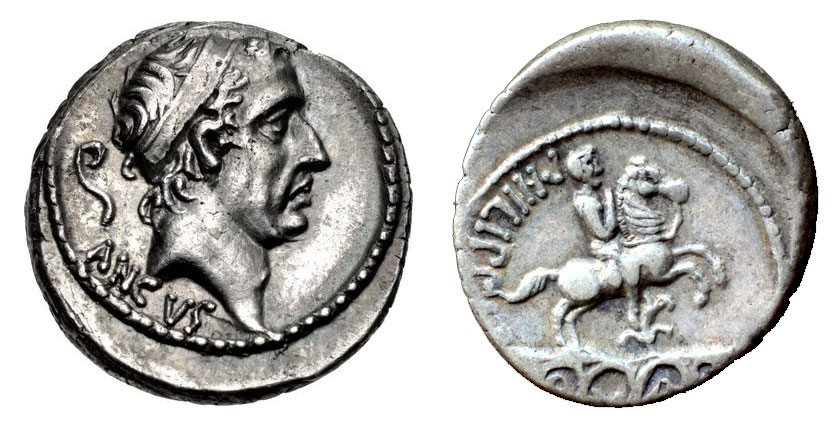
The first to test this premise were the so-called Old Latins (prisci latini), an ancient tribe who even predated Aeneas.
Yet King Ancus Marcius, perhaps to everyone’s surprise, proved to be as much of a warrior as he was an administrator, priest, and diplomat.
The prisci latini were defeated, their city destroyed and their people absorbed into Rome.
Ancus Marcius is also said to have settled the Aventine Hill. Given this new influx of people, this may indeed
Tradition has it that Ancus Marcius founded the city of Ostia. Archaeology appears to say otherwise, suggesting the founding of Ostia to be of a later era.
Rome’s interest in the mouth of the river Tiber will most likely have been due to the presence of salt-pan. Occupying the later site of Ostia granted Rome control over the pans on the southern bank of the river Tiber. Those to the north remained in Etruscan hands.
Building the first bridge over the Tiber, the wooden Sublician Bridge, Ancus established a bridgehead to the Janiculan Hill, which he fortified, though most likely did not as part of the city. This may well have been to help protect the salt route from Ostia and to deny the growing threat of Etruscans the strategic strongpoint on the western side of the river.
Ancus Marcius died widely respected and was deemed a truly good king by later Roman historians.
As with Tullus Hostilius, King Ancus Marcius does have much later descendants make an entrance into the Roman records. By 357 BC the Marcii reached the consulship.
Again this suggests the existence of this ruler of Rome’s semi-mythical history may indeed have existed.
Roman Kings – Tarquinius Priscus (“Tarquin the Elder”)
The fifth king of Rome was one Lucius Tarquinius Priscus (Priscus in this case simply signifies him as Tarquin ‘the Elder’ and it was a title attributed to him much later by Roman historians). The stories surrounding this monarch show us that we are still deeply reliant on legend and myth to paint any sort of picture of his rule.
Tarquin the Elder, as Tarquinius is generally called, moved to Rome from the Etruscan town of Tarquinii. His father, Demaratus, was a nobleman from Corinth who was forced to leave his city (655 BC) when the tyrant Cypselus assumed power there.
The link to Greece is indeed possible as there is evidence of Greek traders in Tarquinii. But it nonetheless sounds like a somewhat strained effort by later Romans to avoid admitting that Rome had in fact been ruled by Etruscans.
Legend has it that on his entering the city of Rome an eagle swooped down and snatched Tarquin’s cap with his talons, only to place it on his head again before flying away. Evidently, Tarquin was a man favoured by fate.
Nonetheless he deemed it wise to change his forename from the Etruscan Lucumo to the Latin Lucius in order to smooth his transition from Etruscan to Roman nobility. Tarquin’s wife Tanaquil was of aristocratic Etruscan blood.
If by his own right, or by that of his wife’s connections, Tarquin soon rose to be a figure of significant influence in Rome.
He further assumed an influential position with the reigning king, Ancus Marcius. So much so in fact, he was made guardian of King Ancus’ two sons.
This proved a position of vital importance when Ancus Marcius died. Tarquin persuaded the two sons to go hunting while he made arrangements for their father’s funeral ceremony. When they returned it was to find Tarquin on the throne. He’d used their absence to win over the Romans to grant him their votes. The Roman monarchy was not hereditary.
Ancus Marcius’ sons had been in a prime position to win the favor of the Roman people, but Tarquin had outmaneuvered them.
Tarquin’s means of accession to the throne may have been underhand, but his record as monarch seems to have been impressive.
First, he was to see off the military challenges by neighbouring tribes which seemed always to flare up at the accession of a new monarch.
Though in battle Tarquin seems to have achieved much more than merely holding his ground. Tarquin’s many campaigns led to victories over the Sabines, Latins, and Etruscans. According to Dionysius, it was a deputation of Etruscan cities defeated in battle that brought him the symbols of sovereignty: A gold crown, an ivory chain, an eagle-headed scepter, a purple tunic and robe, and twelve fasces (axes enclosed in bundles of rods).
Tarquin the Elder may have begun the construction of the great Temple of Jupiter Capitolinus, but this is uncertain. The introduction of the Circus Games to Rome is ascribed to King Tarquin the Elder. He is traditionally believed to have been the ruler who laid out the Circus Maximus.
Tarquin is also credited with the initial drainage of the forum and the creation of the Cloaca Maxima. However, it must be added that what was eventually to become the main sewer of Rome, was at this early stage merely a large drainage ditch to make usable the marshy ground in the shallow between the hills of Rome. Later further drainage was added by his successors.
He also added 100 members of the lesser nobility (minores gentes) to the senate. These were most likely lesser Etruscan nobles whom he’d encouraged to settle in the city. Their promotion will no doubt have helped to strengthen his grip on power.
Tarquin’s end, when it came, was a violent one. The scorned sons of King Ancus finally sought revenge and hired two assassins. As one approached from the front posing as a party in a legal dispute, the other came up behind and struck at his head with an axe. Tarquin died instantly. Yet that was not what the Romans were told. Tarquin’s wife Tanaquil informed the people that she was tending to his wounds and that the king meanwhile wished to see the little-known Servius Tullius, a protégé of Tanaquil’s and Tarquin’s son-in-law, act on his behalf until he had recovered.
Naturally, Tarquin the Elder never recovered. But by the time the Romans became aware of their king’s demise, the new man was already firmly on the throne.
Roman Kings – Servius Tullius
The sixth king, Servius Tullius, was a monarch celebrated for particularly high achievement by the Romans. Yet to modern eyes, it appears as though several achievements of early Roman history have somehow been attributed to him as a means of attributing them to someone. For it seems doubtful that Servius was really responsible for all ascribed to him.
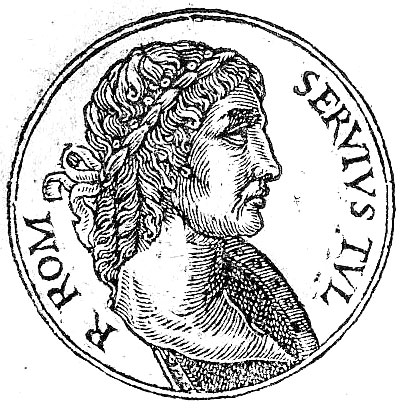
Servius Tullius’ origins are uncertain. His name may in fact be a corruption of the word servus (slave). The name itself was later only used by plebeians.
One story tells of him being the son of a household slave. (Though Livy writes he was a prince from the Sabine city of Corniculum held captive by the Romans.)
Interestingly, there was also an Etruscan tradition, which claimed that Servius was in fact an Etruscan named Mastarna.
Legend also states that, when Servius was still a boy, his parents discovered him asleep in bed with his head covered by flames. Yet the sleeping child suffered no harm. Word of this momentous portent eventually reached Tanaquil, the wife of King Tarquin the Elder, who deemed it a sign that the boy was marked out for great things. Thenceforth Servius was a protégé of Rome’s powerful queen.
At the death of King Tarquin the Elder, it was Tanaquil who assured Servius’ ascent to the throne. The sons of Ancus Marcius being implicated in Tarquin’s murder made it impossible for them to now contest the throne. They retired into exile.
Tarquin the Elder however had three sons; Tarquin, Lucius, and Arruns. To win their support, Servius shrewdly married them to his own daughters.
His position though was soon secured, when a war against the Etruscan city of Veii proved him to be an able military commander. In fact so impressive was his victory that in his 44 years in power, he had no need to take to the field again.
The Romans believed Servius’ reign to have seen the first use of coinage in the city.
Unlike the Greeks, early Roman society did not use money. Far more they bartered – salt for pottery, grain for wood, etc…
Where the system proved inadequate the Romans expressed value in for of ‘heads of cattle’. One such head of cattle was worth ten sheep.
The head of cattle (pecus) became the first Roman monetary unit. From this came the first Latin word for money – pecunia. A primitive monetary system evolved based on ingots of raw copper of the Roman pound (libra) of 327 g.
Such an ingot could then be broken up into yet different sizes and values.
King Servius was the first to have a stamp put onto the copper, until then it was just the raw metal. The design to have been used supposedly was either an ox or sheep.
King Servius Tullius is said to have enlarged the city. Romans also attributed the ‘Servian Wall’ to him, though it is most likely that he was this city wall was a product of the 4th century BC.
It is widely believed though that the agger, a set of defensive earthworks on the Quirinal, Viminal, and Esquiline Hills were a legacy of his. It is therefore possible that, although not the Servian Wall, some lesser defensive cordon may have been set up around the city by King Servius Tullius. After all, archaic Rome is believed to have possessed defenses, albeit we know very little about them. A major achievement of his reign appears to have been the transfer of the regional festival of Diana from Aricia to the Aventine Hill of Rome.
A temple was dedicated to the goddess on the Aventine Hill, not merely by the Romans but by the people of Latium. Archaeology seems to grant this story some support. The moving of a regional festival and the prestigious Temple of Diana to Rome seems to show that the city was of rising importance to the wider region.
Perhaps the most impressive idea ascribed to Servius Tullius is the census, which counted the people and ranked them into five classes, according to wealth.
(This division of the people by wealth is often referred to as a ‘timocratic’ system, after the Greek timo (worth) and kratia (rule); so literally ‘rule by worth’.)
The classes were divisions created to decide the voting rights of the people (with the rich enjoying most votes) and to help administer the levying of troops, as the higher a citizen’s class, the better armor and weaponry he was able to afford.
Servius is further said to have made a division of the people into three tribes for tax purposes: the ramnes, the luceres, and the tities. (Hence the relation of the words ‘tribe’ and ‘tribute’.) These tribal divisions may have been ethnic in nature, though very little is known about them.
A further change of constitutional importance credited to Servius Tullius is his reform of the army, in particular, his granting the army a political assembly in its own right, the comitia centuriata.
His reign is also closely associated with the construction of the great Temple of Jupiter Capitolinus (185 ft wide and 65 ft high). If it is believed that Tarquin the Elder began the temple, most of its construction must have been completed under Servius Tullius. Especially bearing in mind the length of Servius’ reign, it is perhaps doubtful that Tarquin the Proud was the king to complete this great work, as tradition holds.
Legend tells of an outrageous coup that overthrew King Servius Tullius in old age. It was the ambitions of Servius’ daughter Tullia and her husband Lucius Tarquin that should prove disastrous to the old king.
Servius Tullius’ policies had made him unpopular with the senators and Lucius Tarquin was quick to exploit that. If the tale of the king’s slave origins is true, this also will not have helped.
At some point, a conspiracy was hatched to overthrow the king.
One day Tarquin simply arrived at the senate in royal robes and summoned the senators to acknowledge him in his position. Servius rushed to the senate but was bodily thrown from the hall. In the chaos that followed King Servius was stabbed to death by hired assassins. Roman legend adds a gruesome note, describing how Tullia later returned from the senate, where she had seen her husband confirmed as the new ruler. When her carriage drove down the street in which her father Servius had fallen it ran across his dead body.
The street in which King Servius Tullius was assassinated and run over was henceforth known as the vicus sceleratus, the ‘street of guilt’.
Roman Kings – Lucius Tarquinius Superbus (“Tarquin the Proud”)
The seventh and final king of Rome was one Lucius Tarquinius Superbus (Superbus in this case simply signifies him as Tarquin ‘the Proud’ and it was a title attributed to him much later by Roman historians).
Tradition holds that Tarquin ‘the Proud’ was the son of Tarquin ‘the Elder’, though logic suggests that he more likely was a grandson. (Tarquin the Elder died in old age, his successor, Servius Tullius ruled for 44 years and Tarquin himself ruled for another 24/25 years.)
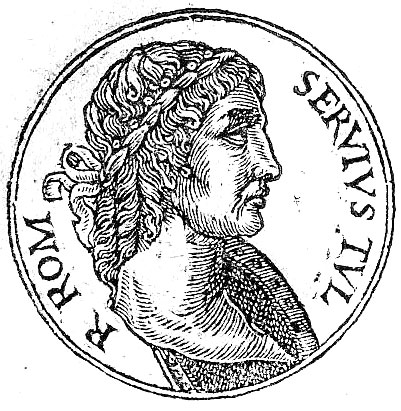
Having come to power by means of a violent conspiracy, Tarquin the Proud lacked any kind of legitimacy. He therefore governed Rome by much the same methods as those he’d used to win the throne. Tarquin was a tyrant similar to those who had seized power in many other Hellenistic kingdoms. His only means of sustaining his position were violence and oppression.
He pronounced himself the supreme judge of Rome, granting himself complete authority over capital cases without the accused having any recourse of appeal.
This privilege Tarquin now exploited to rid himself of any potential rivals. More so, the possessions of the convicted were then seized by the monarch.
One of the victims of these seizures was the father of one Lucius Iunius Brutus, the very man who should come to eventually overthrow him.
If Tarquin governed Rome as a petty, sometimes vindictive tyrant, his performance as a military commander and diplomat was more impressive.
He harassed and cajoled the Latin League into accepting Rome as its official head (the so-called ‘Treaty of Ferentia’), thereby tying the Latins into the Roman military machine, effectively doubling Rome’s military power in a single stroke.
This new military power was then put to use against the neighboring tribe of the Volcians. Two cities were conquered; one by storm, the other, the city of Gabii, by deceit.
The spoils of this successful campaign were put to use in public works. Roman tradition ascribes the completion of the temple of Jupiter Capitolinus to Tarquin ‘the Proud’, although today it is widely believed to have been completed by Servius Tullius.
But Tarquin is further thought to have continued the process of draining the forum, built and improved roads, and strengthened the city’s defenses.
Such public construction was, however, also the product of Tarquin’s oppression. Much of the labor was forcibly obtained from the plebeians.
A legend of considerable importance that attached itself to Tarquin was that of the Sibylline Books. The story goes that the famous Sibyl, a mythical prophetess known throughout the Hellenistic world, appeared before King Tarquin and offered him nine books, containing great wisdom. The price she demanded was astronomical. Tarquin declined.
Unflustered, Sibyl then threw three of the books in the fire, only to demand the same price for the remaining six books. Unnerved, Tarquin though again declined only to see another three of the books tossed into the flames. Once more Sibyl demanded the price. Tarquin relented if only to save what knowledge was left.
If the Sibyl was a legend, the Sibylline Books are indeed thought to have existed, though their origin is unknown. The books were repeatedly consulted for divine guidance in the republican era during times of crisis and were eventually destroyed when fire consumed the Temple of Jupiter Capitolinus in 83 BC.
With the wealthy living in fear of prosecution, should Tarquin deem them a threat or take a fancy to their possessions, and the poor being used to labor in public construction, all Rome has been seething with resentment towards her ruler.
When the final revolution occurred, Tarquin was not in the city but engaged in another military campaign.
The final straw had been the rape of the noblewoman Lucretia by Tarquin’s son Sextus set the city alight. The nobles made their move, led by Lucius Iunius Brutus, declared themselves against Tarquin, and instead announced Rome to be a republic (510/509 BC).
The army quickly came over to the rebels and Tarquin the Proud was forced into exile.
The early days of the Roman Republic saw a bitter struggle for independence against Tarquin’s attempts to regain his throne. Nonetheless, Lucius Tarquinius Superbus, the tyrant of Rome, would never achieve control again. The Roman monarchy had fallen.
Roman Kings – Epilogue
It goes without saying that we have to take much of the history of the Roman kings with a pinch of salt. Much of this is mere myth and legend, though it evidently contains kernels of truth.
Some of the myths may indeed be of considerable significance to the very nature of Rome and its future achievements.
The very seed that created the Roman mentality which was to create the republic may indeed have lain in that heartfelt belief that they were a breed of refugees, criminals, and runaway slaves who sought shelter at the asylum on the Capitoline Hill under King Romulus. Such an identity may have fostered the communal feeling of equality which we find reflected again and again in Roman history.
Rome was divided by wealth and privilege, yet she believed in the essential equality of men. Although some later claimed nobility or divine descent, the Romans were not pretentious about their origins. The ambiguities surrounding the she-wolf who suckled Romulus and Remus, the refuge on the Capitoline Hill, and the legend regarding the ‘Rape of the Sabine Women’ demonstrate that very aptly.
Believing themselves at least spiritual descendants of the uprooted, the fleeing, and criminals in search of a second chance, it is perhaps not surprising that they should form a society that should eventually rid itself of its king and forge ahead with a government by the people for the people.
As with so much of Roman history changes to the constitution tended to be gradual. We find aspects republican constitution emerged under the kings.
Not least the fact that monarchy was never deemed to be hereditary in Rome must have had an important part to play in the development of republican ideals.
Far more the king was elected by the people, formerly appointed by the senate, an advisory body of patricians.
However, the Roman monarch’s rule was a total one. He possessed the right to capital punishment, and was responsible for foreign relations and war, for public security, public works, justice, and proper maintenance of religion.
The very symbol of this total power were the fasces; the rods to scourge and the axe with which to behead the condemned.
But this royal power was tempered by the principle of consultation with the senate. This was the tradition that Tarquin the Proud ignored to his peril. Early Rome would simply not bear the arbitrary use of power by a tyrant.
Nonetheless, it remains questionable how much longer a monarchy could have lasted were Tarquin to have been a wise and benign ruler. Most likely its time was up. Rome had evolved. Rome’s growing power and influence meant that her elite were growing richer and more powerful. The total rule of one could simply no longer be sustained with the patricians demanding a role for themselves in the running of affairs.
In all this, we should perhaps also not underestimate the influence of the Greeks. Greek traders living in Rome may have introduced democratic ideas that the Romans, ever pragmatic, shaped into something of their own.
Perhaps the very notion of Rome’s growth to a substantial town of rising regional power and prestige meant that it became subject to the influence of ‘dangerous foreign ideas’, such as democracy. These would weaken the monarchy and the Roman kings, sapping its support from the nobles and the people alike. So with an egalitarian spirit at the heart of Roman mentality, an ever more confident and ambitious elite seeking to have a share of power, and Greek ideas undermining its standing among the people, the Roman monarchy may indeed have been doomed at the end of the sixth century. Rome’s future was to be a republic without Roman Kings.
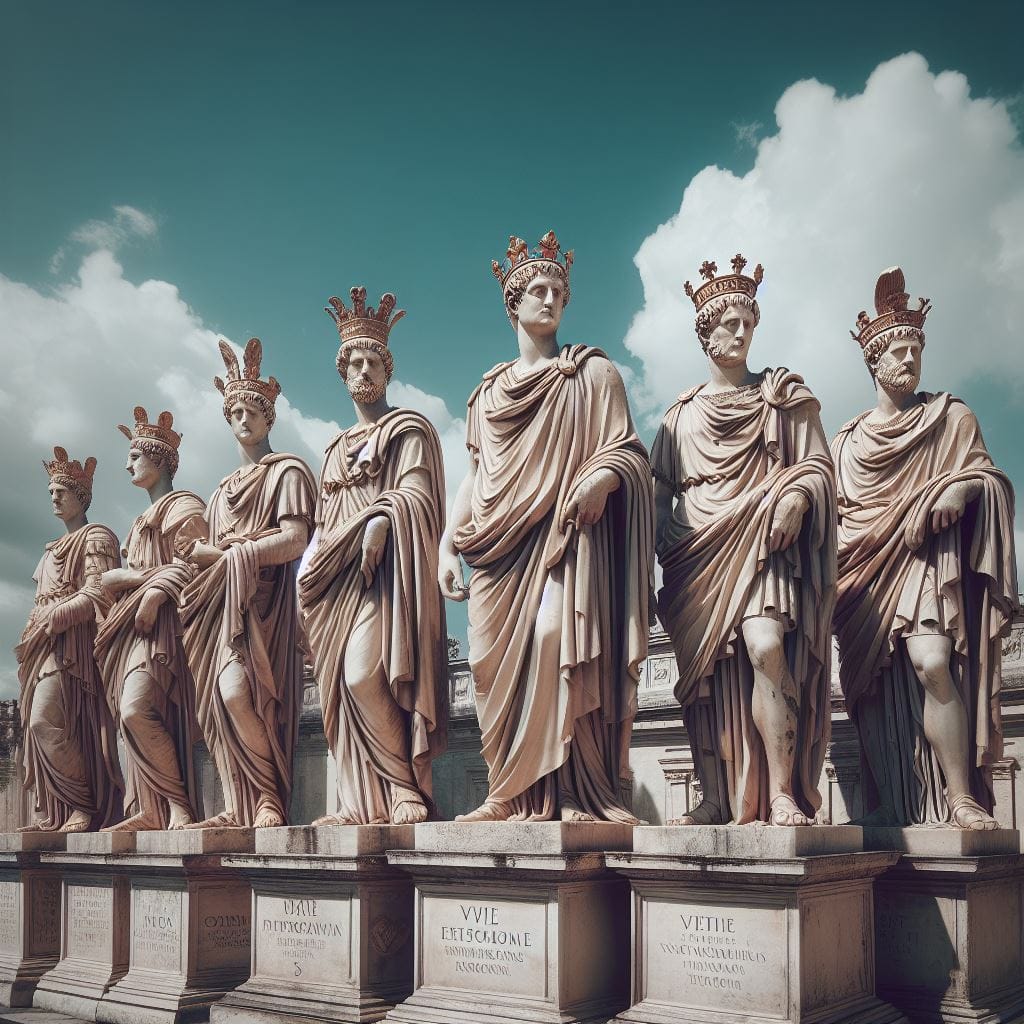
The Roman Kings Chronology
753-716 BC
Rule of Romulus
715-674 BC
Reign of Numa Pompilius
673-642 BC
Reign of Tullus Hostilius. Destruction of Alba Longa.
642-617 BC
Reign of Ancus Marcius. Extension of Rome’s power to the coast.
616-579 BC
Reign of L. Tarquinius Priscus. Forum drained.
578-535 BC
Reign of Servius Tullius. Treaty with Latins.
535-510 BC
Reign of L. Tarquinius Superbus. Erection of the Capitoline Temple. Treaty with Gabii. The Roman territory extended to ca. 350 square miles.
510 BC
The downfall of the last Tarquinian king, Tarquinius Superbus. Brutus liberates Rome. Establishment of a republic headed by two magistrates (later called consuls) elected annually. That was the end for Roman kings.
People Also Ask:
What event made Romans hate Roman kings?
At least according to the Romans, this was largely the fault of the seventh and last among the Roman kings, Lucius Tarquinius Superbus. He had a habit of womanizing, greed, and general tyranny. The inciting incident was him shrugging off his son’s rape of the Roman noblewoman Lucrezia. That even made the people hate Roman Kings.
Who was the bad king of Rome among the Roman Kings?
Tarquinius was the worst among the Roman Kings.
Does Rome still have a king?
There are no Roman Kings today.
What did Rome have instead of Roman kings?
Instead of Roman kings, the Romans had two consuls—rulers who had many of the same powers as the king but were elected to serve one-year terms. Each consul could veto, or reject, the actions of the other consul.
How many kings have Rome had?
There were seven Roman kings.
How long was Rome ruled by Roman kings?
Roman kings ruled for 244 years.
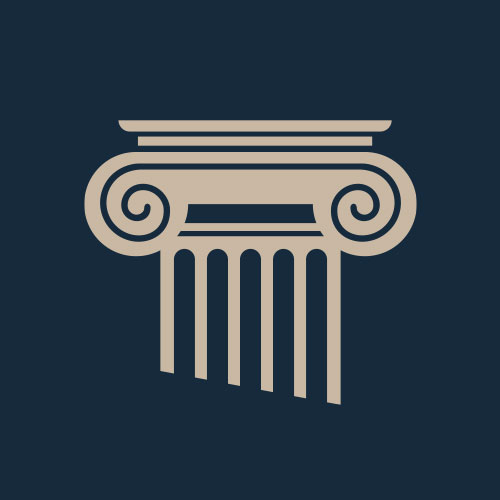
Historian Franco Cavazzi dedicated hundreds of hours of his life to creating this website, roman-empire.net as a trove of educational material on this fascinating period of history. His work has been cited in a number of textbooks on the Roman Empire and mentioned on numerous publications such as the New York Times, PBS, The Guardian, and many more.

